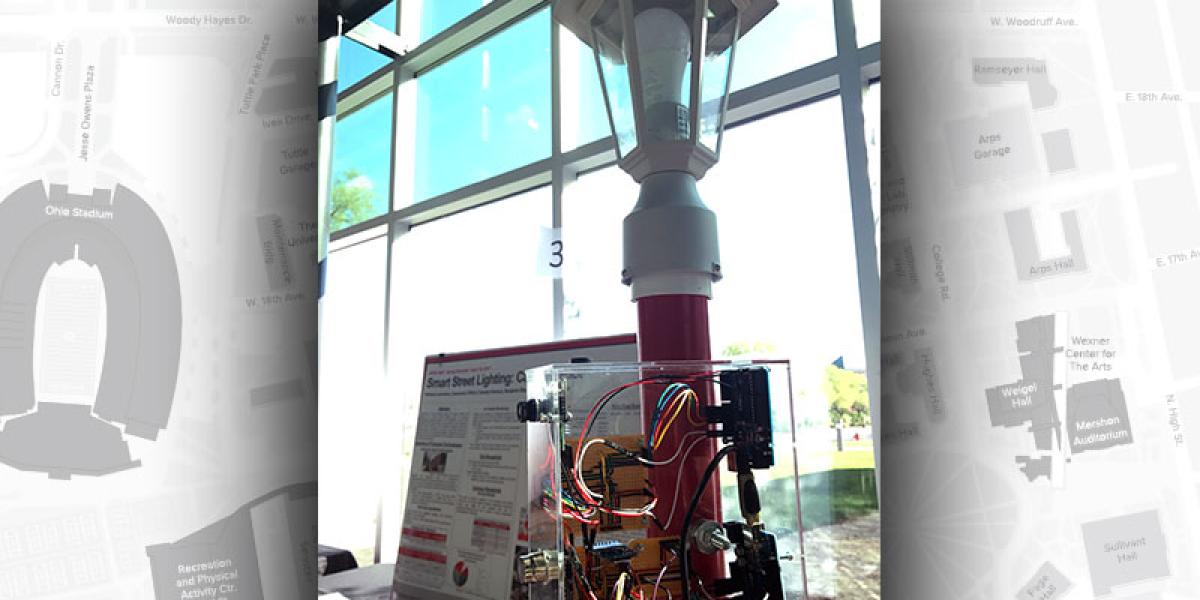Facilities Operations and Development recently partnered with five Ohio State students on their 15-week EEDS (Environment, Economics, Development and Sustainability) Capstone project. The students created a multi-purpose Smart Street Light, designed to assist with security and sustainability. The light was engineered with sensors to detect three different types of data. First the light is equipped with a dimming sensor that is triggered with motion to assist in security. It is also designed to conserve energy, as the light dims down in 25% increments with lack of motion. Second, the light has the ability to take photos to analyze and potentially reduce traffic congestion with a technology called computer vision. Finally, the light is constructed with an air quality sensor, which provides data on carbon levels in the air.
FOD Senior Administrative Director Mike Dixon provided guidance to the group as they developed the purpose for the Smart Street Light and designed the prototype.
“Mike Dixon was one of the biggest assets to this project. He was able to tell us things that made sense to this campus,” Senior EEDS major Ben Black said.
“I think it is important for university staff to support students who are passionate about the goals they are pursuing for themselves and for the broader good of society, but in a practical way,” Dixon said.
On Tuesday, April 18, the students presented the Capstone project at the Environmental Professionals Network (EPN) breakfast. Their proposal recommended the installation of four Smart Street Lights along Woodruff Avenue between the Fisher College of Business and College Road on campus. All four lights would have the dimming sensors, but only one would include computer vision and air quality sensors because of cost concerns. The group estimated the proposal would require a $3,100 investment by the university if adopted. From here the students will wait to see what becomes of their work. The hope is that the university or the City of Columbus can use their research and findings to implement this technology into practical use.
"We don’t want this project to die on somebody’s desk somewhere. We hope it can spark some knowledge with this kind of technology," Black said.

